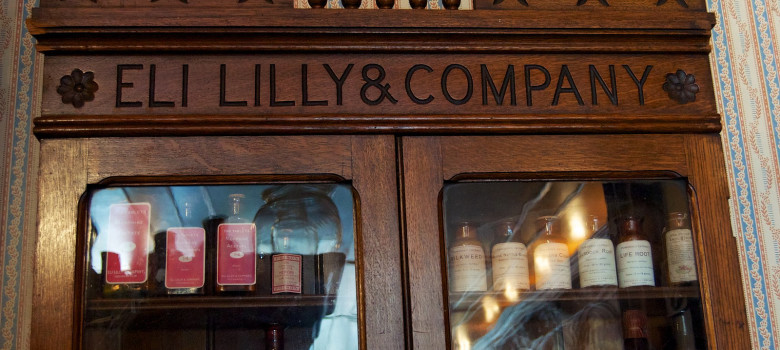The last two Trouble with the TPP posts have focused on the agreement’s investor-state dispute settlement provisions, noting that they do not meet the standard set by the Canadian government in CETA and do not address key concerns over policy making as raised in the Bilcon case. The risks associated with ISDS rules are far more than just the subject of academic or legal debate. Experience shows that the cases can place billions of tax dollars at risk, threatening to wipe out the supposed “gains” created by trade deals.
The current legal battle between the Canadian government and international pharmaceutical giant Eli Lilly provides an illustration of what can happen when ISDS rules go wrong. In the early 1990s, the company applied for patent protection in Canada for two chemical compounds, olanzapine and atomoxetine. The company had already obtained patents over the compounds, but asserted that it had evidence to support new uses for the compounds that merited further protection. The Canadian patent office granted the patents based on the content in the applications, but they remained subject to challenge.
Both patents ultimately were challenged on the grounds that there was insufficient evidence at the time of the applications to support the company’s claims. The Federal Court of Canada agreed, invalidating both patents. Eli Lilly proceeded to appeal the decision to the Federal Court of Appeal and later to the Supreme Court of Canada. The company lost the appeals, as the courts upheld the decision to invalidate the patents.
Under most circumstances, that would conclude the legal story as nine Canadian judges reviewed Eli Lilly’s patent applications and ruled that they failed to meet the standards for patentability. Yet in June 2013, the company served notice that it planned to use the ISDS provisions in the North American Free Trade Agreement to claim that in light of the decisions, Canada is not compliant with its patent law obligations under the treaty. As compensation, Eli Lilly is seeking $500 million in damages.
The Eli Lilly claim is winding its way through the legal process – submissions from both sides are in alongside several amicus briefs (including one from the Canadian Chamber of Commerce that the Canadian government has flagged due to concerns about its independence) – but the implications are being felt far beyond the specifics of the case.
If the pharmaceutical giant succeeds, it will have effectively found a mechanism to override the Supreme Court of Canada and hold Canadian taxpayers liable for hundreds of millions in damages in the process. The cost to the health care system could be enormous as the two Eli Lilly patents may be the proverbial tip of the iceberg and claims from other pharmaceutical companies could soon follow. That is the real world danger of the TPP’s ISDS provisions, which not only limit the regulatory and policy authority of governments, but also open the door to massive taxpayer liability along the way.
(prior posts in the series include Day 1: US Blocks Balancing Provisions, Day 2: Locking in Digital Locks, Day 3: Copyright Term Extension, Day 4: Copyright Notice and Takedown Rules, Day 5: Rights Holders “Shall” vs. Users “May”, Day 6: Price of Entry, Day 7: Patent Term Extensions, Day 8: Locking in Biologics Protection, Day 9: Limits on Medical Devices and Pharma Data Collection, Day 10: Criminalization of Trade Secret Law, Day 11: Weak Privacy Standards, Day 12: Restrictions on Data Localization Requirements, Day 13: Ban on Data Transfer Restrictions, Day 14: No U.S. Assurances for Canada on Privacy, Day 15: Weak Anti-Spam Law Standards, Day 16: Intervening in Internet Governance, Day 17: Weak E-commerce Rules, Day 18: Failure to Protect Canadian Cultural Policy, Day 19: No Canadian Side Agreement to Advance Tech Sector, Day 20: Unenforceable Net Neutrality Rules, Day 21: U.S. Requires Canadian Anti-Counterfeiting Report Card, Day 22: Expanding Border Measures Without Court Oversight, Day 23: On Signing Day, What Comes Next?, Day 24: Missing Balance on IP Border Measures, Day 25: The Treaties With the Treaty, Day 26: Why It Limits Canadian Cultural Policies, Day 27: Source Code Disclosure Confusion, Day 28: Privacy Risks from Source Code Rules, Day 29: Cultural Policy Innovation Uncertainty, Day 30: Losing Our Way on Geographical Indications, Day 31: Canadian Trademark Law Overhaul, Day 32: Illusory Safeguards Against Encryption Backdoors, Day 33: Setting the Rules for a Future Pharmacare Program, Day 34: PMO Was Advised Canada at a Negotiating Disadvantage, Day 35: Gambling With Provincial Regulation, Day 36: Why the TPP Could Restrict Uber Regulation, Day 37: Breaking Digital Locks for Personal Purposes, Day 38: Limits on Canadian Digital Lock Safeguards, Day 39: Quiet Expansion of Criminal Copyright Provisions, Day 40: Mobile Roaming Promises Unfulfilled, Day 41: ISDS Rules Do Not Meet the Canada’s New “Gold” Standard, Day 42: The Risks of Investor-State Dispute Settlement)








It’s good to know where our tax money goes.
And the $250,000 fine for a single download.
off-topic /other news…
Barnes+noble kills UK nook ebook hardware.
(Sony died last year)
Amazon kills privacy settings (fire 0s)
(almost canadian there, eh?)
India new pirate-zone in e-com.
(China, Indian, Korea, Japan, MidEast
have no (enforced) intel prop rights)
Calibre strips DMR for backups on ebooks; (yeah!)
for backup+usage on other devices.
The web is a freebie-zone;
the formal establishment is gated;
and only 1/100 carry their own weight.
(sales/freebies)
plan for a (mb/illion=best-seller) now.
(currently 10,000 =[ $5000 rev])
Excellent article! I believe Canada has paid huge fines to U.S. in soft wood lumber disputes since NAFTA as well. More people need to become aware of ISDS.
Pingback: ISDS Cases | The Next Turn